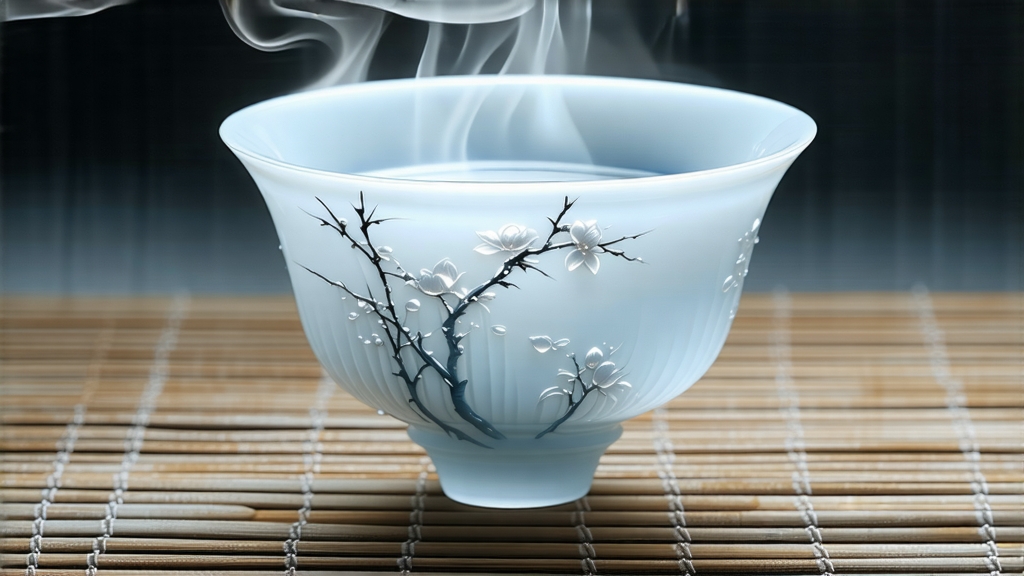
Bai Hao Yin Zhen, literally “Silver Needle White Down,” is the most aristocratic expression of China’s white-tea family. To the uninitiated it may look like a handful of pale pine needles, yet in the cup it releases the hush of mountain dawns, the coolness of hidden springs, and a sweetness that lingers like a remembered lullaby. International tea lovers often meet white tea through bagged blends labeled merely “white”; once they taste a properly handled Yin Zhen, they realize how vast the distance is between generic and sublime.
History: from palace tribute to minimalist icon
White tea’s written record begins in the Song dynasty (960-1279), when the emperor’s tea garden in Fujian was ordered to pick “small buds covered in white silk,” steam them, wash them, and press them into cakes for court tasting. The loose, unpressed style we now call Yin Zhen emerged during the late Ming transition, when tea makers discovered that slow withering and no shaping preserved both the downy covering and a remarkably fresh aroma. By the 1790s Fuding county was exporting “Pekoe Silver Needles” through the port of Guangzhou to Dutch and British merchants, who prized the tea for its visual elegance and low astringency. In 1891 the buds won a gold medal at the Melbourne International Exhibition; a century later they became the state gift presented by Chinese premiers to foreign dignitaries, sealing the tea’s reputation as liquid diplomacy.
Terroir: why Fuding and Zhenghe taste different
Authentic Yin Zhen is produced in only two micro-zones along Fujian’s northern coast: the granite ridges of Fuding and the red-clay basins of Zhenghe, both lying just inside the subtropical monsoon belt. Fuding’s cool sea breezes and sandy, mineral-rich soils yield needles that are plumper, higher in amino acids, and famous for a “milk-lotus” aroma. Zhenghe sits slightly inland; its warmer days and cooler nights create a narrower diurnal range, translating into thinner buds but a deeper, hay-like sweetness reminiscent of dried persimmon. Purists debate which style is superior; cupping them side-by-side is the only reliable verdict.
Plants: the cult of the Da Bai cultivar
The raw material is almost exclusively the Da Bai (Big White) cultivar group—Fuding Da Bai and Zhenghe Da Bai. These bushes germinated from seed lines selected during the Qing for their oversized buds: a single tip can weigh 0.5–1 g, twice that of conventional tea varieties. The down that cloaks each bud is not decorative; it is a natural sunscreen rich in catechins and trichome sacs that store aromatic volatiles. Because the plant pumps nutrients into the bud rather than the leaf, harvest windows are brutally short: only 5–7 days in late March when the bud reaches 2.5–3 cm but has not yet unfurled into a leaf. One kilogram of finished tea demands roughly 30,000 hand-plucked tips, the daily yield of a skilled picker who works with thumb and forefinger to avoid the nail’s oxidizing bruise.
Craft: the art of doing almost nothing
White tea’s minimalism is deceptive; the fewer the steps, the more unforgiving the timing. After picking, the buds are spread on bamboo trays 1–2 cm thick and left to wither for 36–72 hours depending on humidity. No pan-firing, no rolling, no roasting—only the gentle pull of air. Master witherers shuffle the trays every hour so that each needle experiences identical moisture loss; too fast and the aroma stays grassy, too slow and the tea risks sour mold. When the moisture drops to 8–10%, a final desiccation at 40 °C locks in fragrance without caramelizing sugars. The entire process is monitored by nose: the scent must migrate from fresh cucumber to ripe melon to dried apricot and finally to a subtle, warm pollen. Any deviation and the batch is downgraded to second-grade “White Peony” or sold for perfume extraction.
Grades & market names
Within Yin Zhen itself a quiet hierarchy exists. “Imperial Needle” refers to buds longer than 3 cm, picked before Qingming festival, possessing a visible “knee” where the bud once joined the stem. “Gold Needle” is a modern innovation: the same buds lightly oxidized for